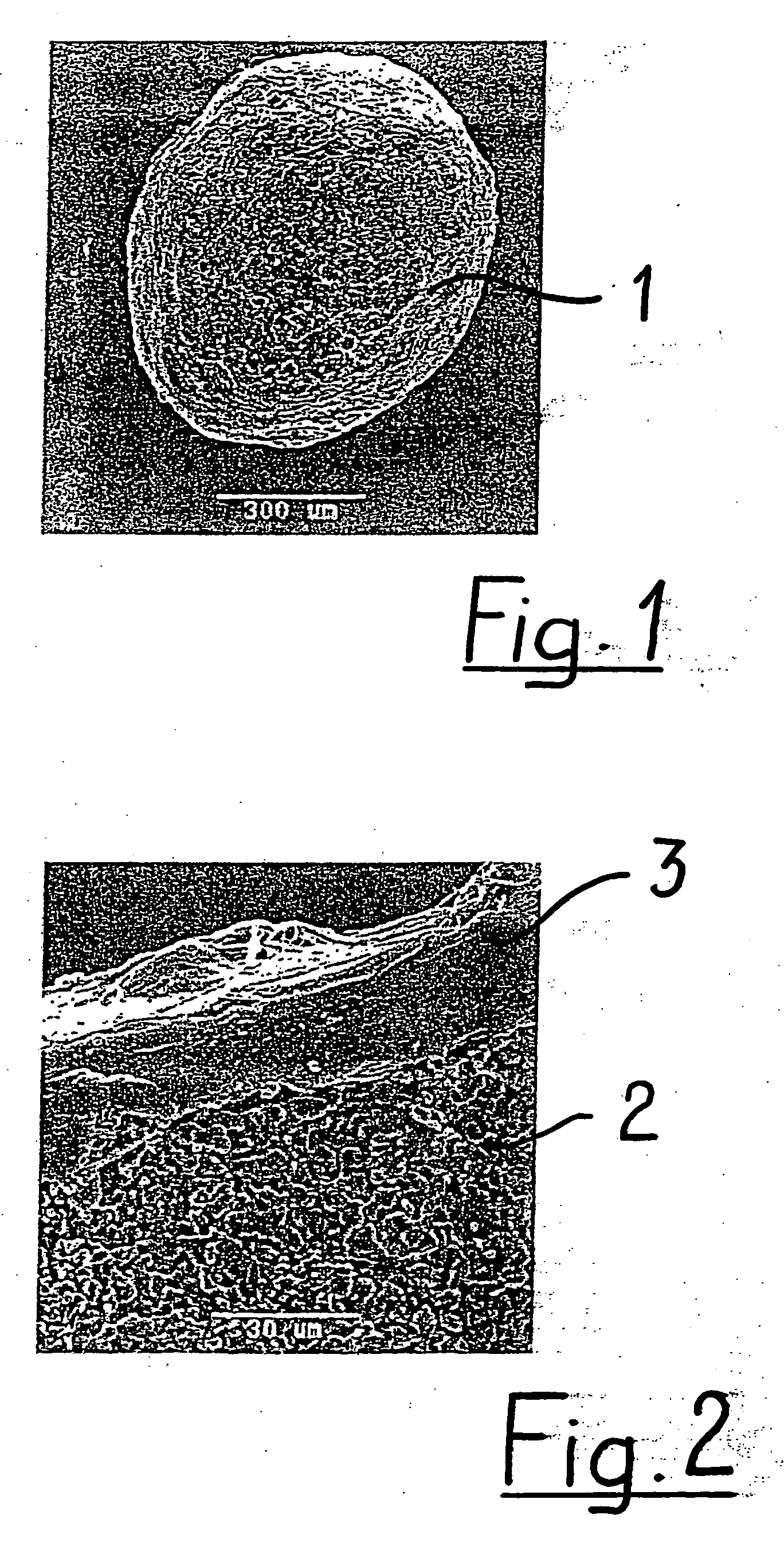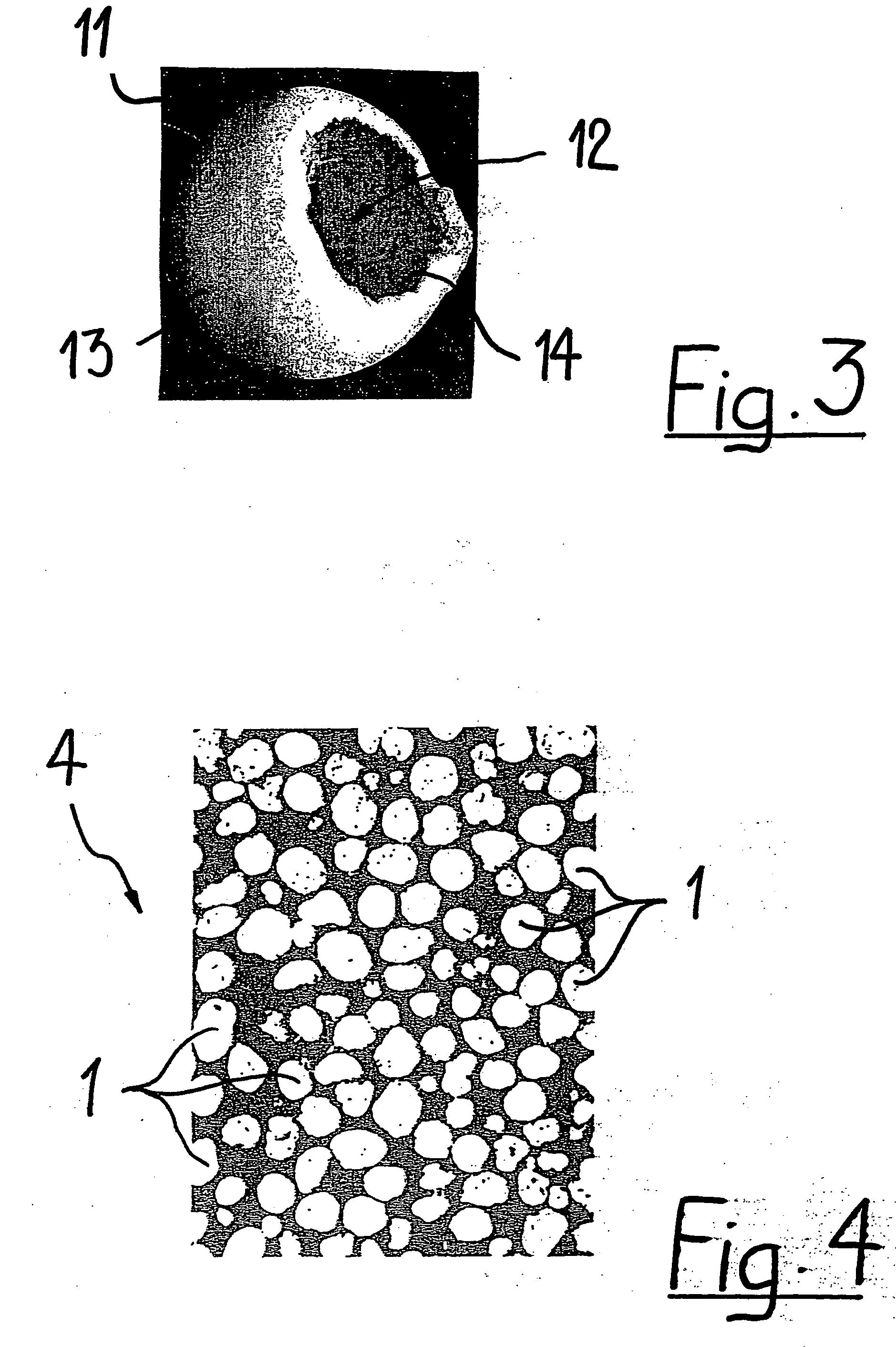Porous biocompatible implant material and method for its fabrication
a biocompatible and implant material technology, applied in the field of porous biocompatible implant material and method for its fabrication, can solve the problems of many drawbacks of biocompatible implants, lack of donor tissue, bacterial and viral contamination, atrophy, etc., and achieve the effects of reducing bacterial growth and infection, reducing bone loss, and easy assembly and shaping
- Summary
- Abstract
- Description
- Claims
- Application Information
AI Technical Summary
Benefits of technology
Problems solved by technology
Method used
Image
Examples
Embodiment Construction
[0039] The coated granule 1 depicted in FIGS. 1 and 2 is of generally spherical shape. In spite of its usually relatively porous structure it has a very smooth outer surface due to being coated with a biocompatible and biodegradable polymer 3. The base 2 material in the shown embodiment is tricalcium phosphate (TCP). From FIG. 2, it is apparent that the granule 1 has a porous structure preferably comprising micropores having an average diameter of larger than 0 μm to about 10 μm, preferably about 0.1 μm to about 6 μm. It is to be noted that very densely sintered granules may have no microporosity at all. The coating 3 is a poly-lactide-co-glycolide (PLGA) and encloses the base material 2 completely like a shell. It has a thickness of about 2 μm to about 300 μm, preferably about 5 μm to about 20 μm.
[0040]FIG. 3 shows a hollow, generally spherical granule 11. The wall 13 of the granule 11 has an opening 14, which communicates with the cavity 12 of the granule. The hollow spherical gr...
PUM
| Property | Measurement | Unit |
|---|---|---|
| equivalent-diameter | aaaaa | aaaaa |
| weight fraction | aaaaa | aaaaa |
| thickness | aaaaa | aaaaa |
Abstract
Description
Claims
Application Information
 Login to View More
Login to View More - R&D
- Intellectual Property
- Life Sciences
- Materials
- Tech Scout
- Unparalleled Data Quality
- Higher Quality Content
- 60% Fewer Hallucinations
Browse by: Latest US Patents, China's latest patents, Technical Efficacy Thesaurus, Application Domain, Technology Topic, Popular Technical Reports.
© 2025 PatSnap. All rights reserved.Legal|Privacy policy|Modern Slavery Act Transparency Statement|Sitemap|About US| Contact US: help@patsnap.com


